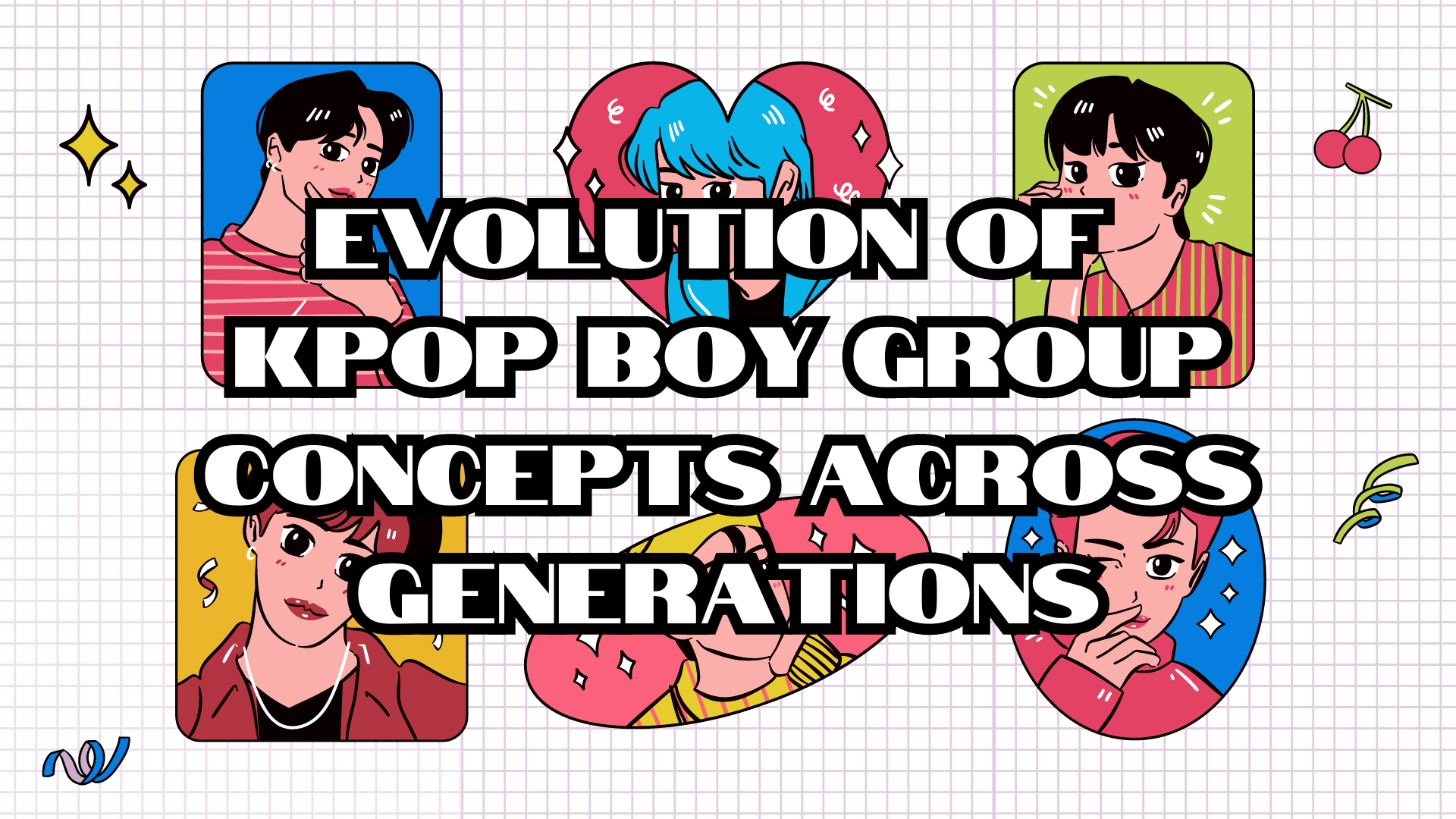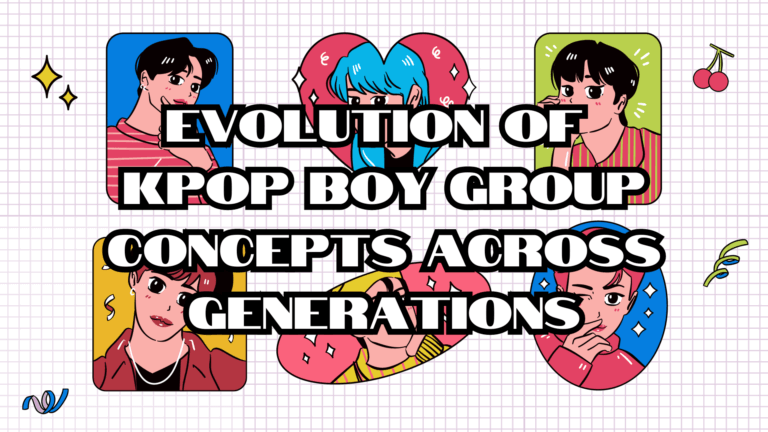

Today, we embark on a journey through the dynamic history of Korean pop music, commonly known as K-pop, as we delve into the evolution of male groups. This exploration will take us from the inception of K-pop in the 1st generation to the current 4th generation, tracing the fascinating changes and developments that have shaped these iconic groups.
The evolution of male K-pop groups is not merely a story of musical progression; it’s a reflection of the broader societal and cultural shifts that have occurred over the years. Each generation brought with it new trends, styles, and concepts, all of which were skillfully incorporated by these talented groups. From the 1st generation’s emphasis on traditional masculinity to the 4th generation’s embrace of individuality and inclusivity, we will witness how these changes were mirrored in both the music and the image these groups projected.
Join us on this exploration as we unravel the captivating journey of male K-pop groups, showcasing their adaptability, innovation, and their role as cultural trendsetters, shaping not only the music industry but also the changing values of their times.
First generation Kpop boy group concepts
(late 1990s - early 2000s)
In the genesis of K-pop’s male groups, the first generation emerged with a musical style that revolved around soulful harmonies and heartfelt ballads. Their performances were a spectacle of dramatic choreography, characterized by precise synchronization and powerful stage presence. This era was marked by the widespread appeal of the “handsome boys” concept, where these groups not only showcased their vocal talents but also their striking looks, making them heartthrobs among teenagers.
The synergy between their musical prowess and charismatic appearances catapulted them to stardom, laying the foundation for K-pop’s future success. Groups like H.O.T and Seo Taiji and Boys exemplified this era’s blend of vocal excellence and visually captivating performances. The first generation’s impact extended beyond music; it helped solidify K-pop as a cultural phenomenon and set the stage for the transformations and innovations that would follow in the subsequent generations.
– H.O.T.
– Sechs Kies
– g.o.d.
– Shinhwa
– Fly to the Sky

Second Generation kpop boy group concepts
(mid 2000's - early 2010's)
The second generation of K-pop boy groups, which emerged in the mid-2000s and extended into the early 2010s, marked a dynamic evolution within the genre. This era was characterized by a departure from the traditional harmonies and ballads of the first generation. Instead, these groups embraced a diverse range of musical genres, incorporating elements of hip-hop, electronic, and even rock into their repertoire. This musical experimentation allowed them to capture a broader audience, both domestically and internationally.
One of the notable changes in this generation was the emergence of diverse concepts. While the “bad boys” and “neighborhood idols” concepts gained prominence, boy groups explored a wide spectrum of images. Some, like BIGBANG, embraced the “bad boy” persona with edgy fashion and rebellious lyrics, while others, like SHINee, presented a more colorful and sophisticated image, known as the “contemporary idols.”
Moreover, the second generation benefited from technological advancements, with music videos becoming increasingly elaborate and cinematic. This allowed boy groups to convey their concepts more vividly, creating a stronger connection with fans.
In summary, the second generation of K-pop boy groups marked a period of musical experimentation and diversified concepts. Their willingness to embrace various genres and images showcased their versatility, further solidifying K-pop as a global cultural phenomenon and setting the stage for the innovations that would follow in the subsequent generations.
– TVXQ
– Super Junior
– BIGBANG
– 2PM
– SHINee
– FT Island

Third Generation kpop boy group concepts
(mid 2010's - late 2010's)
The third generation of K-pop male groups, emerging in the late 2010s and extending into the 2020s, ushered in a groundbreaking era marked by musical innovation and storytelling. These groups embraced a spirit of experimentation by fusing diverse musical styles, resulting in a rich and dynamic soundscape that resonated with a global audience.
In this generation, storytelling became paramount. Male K-pop groups not only sought to entertain with their music but also aimed to convey deeper narratives through their songs and visuals. This storytelling approach was often accompanied by complex and intricate music videos, turning each release into an immersive visual and auditory experience. Groups like BTS, EXO, and NCT excelled in weaving intricate storylines into their music, creating a sense of anticipation and engagement among fans.
Furthermore, strong performances remained a cornerstone of this generation. The meticulous choreography, synchronized dancing, and powerful stage presence became defining features of these groups, setting them apart in a highly competitive industry. Their commitment to delivering compelling live performances added another layer to their storytelling, allowing fans to connect with the emotional depth of their music on a visceral level.
In conclusion, the third generation of K-pop male groups pushed the boundaries of creativity and innovation. Their fusion of musical styles, emphasis on storytelling, and dedication to powerful performances reshaped the K-pop landscape, attracting a global fanbase that appreciated not only the music but also the profound narratives and visual artistry that accompanied it.
– EXO
– BTS
– GOT7
– Seventeen
– NCT
– MONSTAX

Fourth Generation kpop boy group concepts
(2020's - present )
The fourth generation of K-pop male groups represents a revolutionary shift in the genre, marked by an unrelenting commitment to innovation. These groups are redefining the traditional K-pop style by fearlessly fusing a wide array of musical genres, transcending boundaries and expectations.
What sets this generation apart is their adept use of technology and social media platforms as promotional tools. They’ve harnessed the power of platforms like YouTube, Twitter, Instagram, and TikTok to directly engage with fans worldwide. This accessibility has fostered a closer connection between artists and their audience, enabling fans to participate actively in the creative process.
Furthermore, the fourth generation is characterized by its willingness to experiment with non-traditional concepts and push the envelope of what K-pop can be. They often blur the lines between music genres, combining elements of hip-hop, R&B, EDM, and more to create a unique sonic identity. Groups like Stray Kids and ATEEZ are exemplars of this trend, carving out their niche with unconventional sounds and boundary-pushing music videos.
In essence, the fourth generation of K-pop male groups is a testament to the genre’s constant evolution. Their fusion of genres and embrace of modern technology has allowed them to captivate a diverse global audience and set new standards for what K-pop can achieve in the digital age.
– Stray Kids
– ATEEZ
– ENHYPEN
– TXT
– TREASURE
– P1harmony




